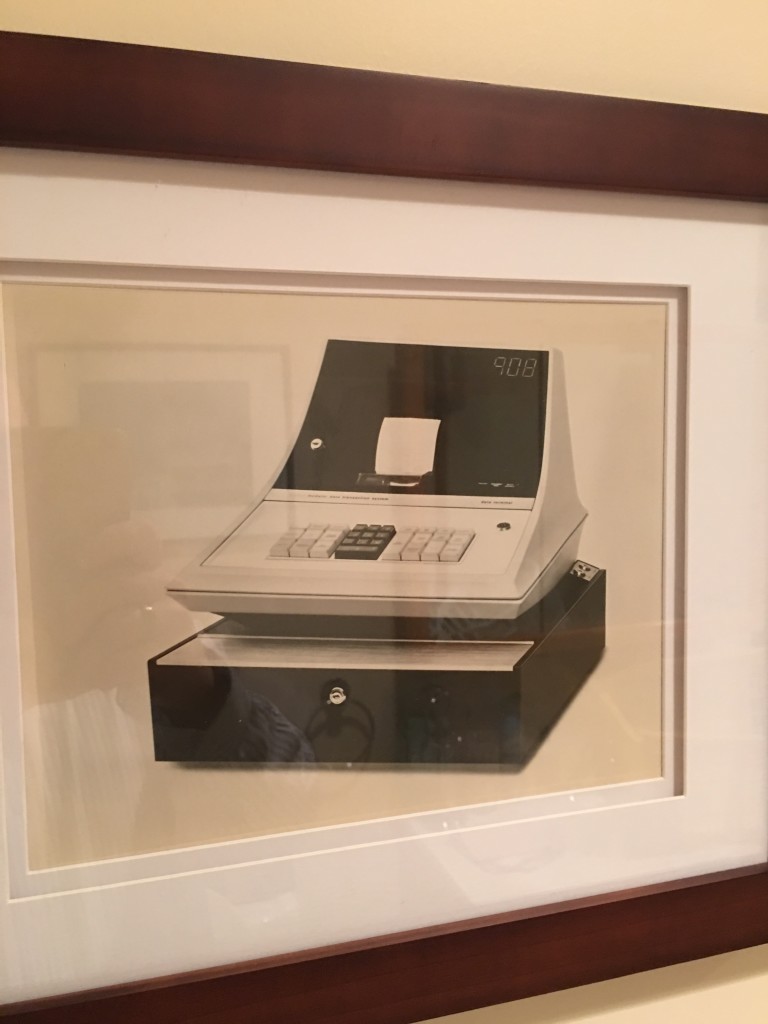
While surfing around on the internet I found some newish photos of the Singer-Friden 908 900 series Cash Register. The find made my heart leap because while the photos were on worthpoint.com, they indicated the source of the listing was eBay. Alas, I could not find a corresponding auction on eBay, because I would certainly go just about anywhere in the lower 48 states to pick up one of these cash registers. They’re in my “top five” of electronic point of sale system geekiness and probably one of the very first systems that caught my attention.
The Singer 908 ran on 2K of RAM. Developed in the late 1960s after Singer purchased Friden, cash registers of this series were typically found in Sears (900/902), JC Penney (925), and other department store chains. The numeric display showed only numbers; operator guidance was provided through the buttons lighting up in sequence of the program. The back-end system supporting this register was the Singer System Ten. The cash register terminal initiated all communication with the System Ten, communicating over a two-wire connected pair at 1200 baud. Many locations used store and forward tape units. All math operations were done locally at the register, the backend provided a credit authorization option and collected all the data from the terminal. Data was traditionally transmitted at the end of the day, but busier locations could schedule interval reports to the back office.
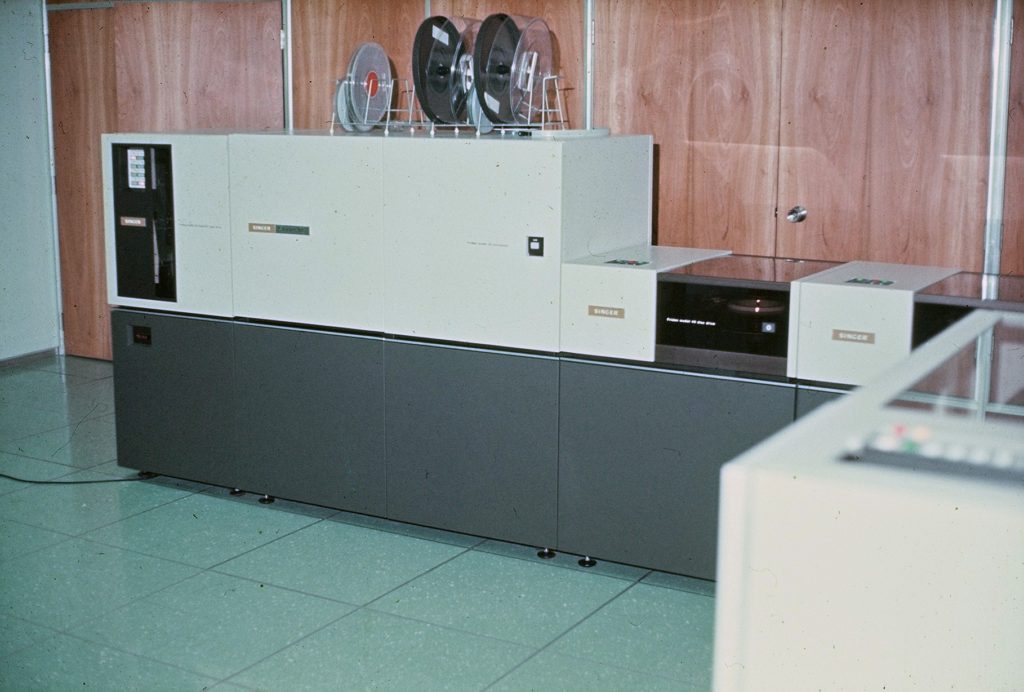
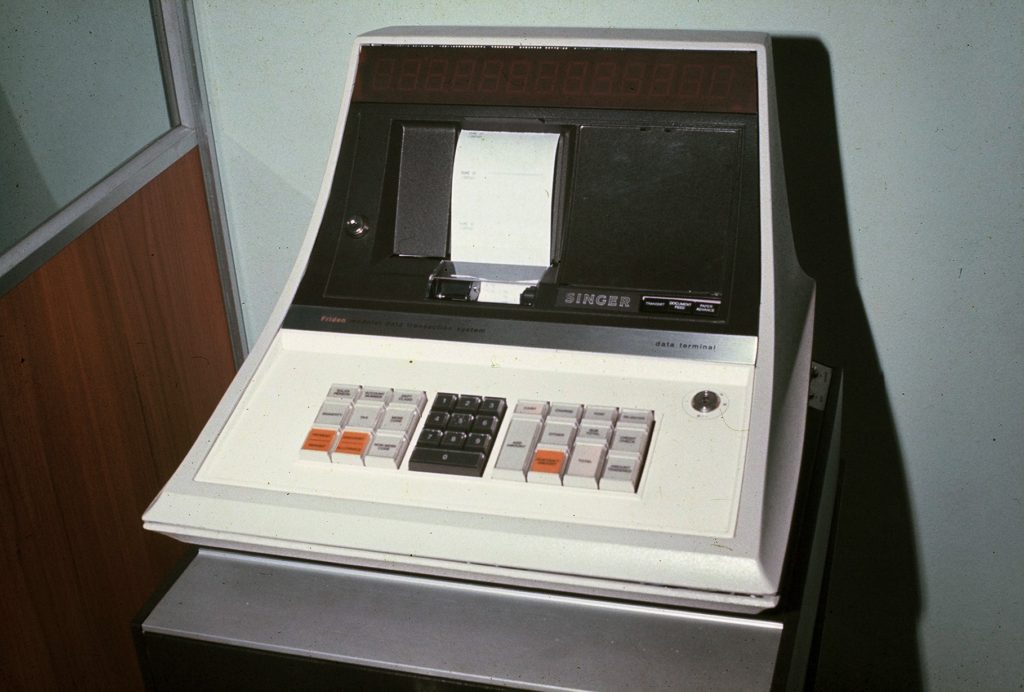
The Singer system was the first fully electronic point of sale system used by Sears. Curiously, I found a photo of a Walmart that also used the Singer system. The first generation of electronic cash registers at Walmart were made by several different manufacturers, NCR and Data Terminal Systems, and apparently, also Singer. The registers are easy to identify with their sleek, “sci-fi” design.
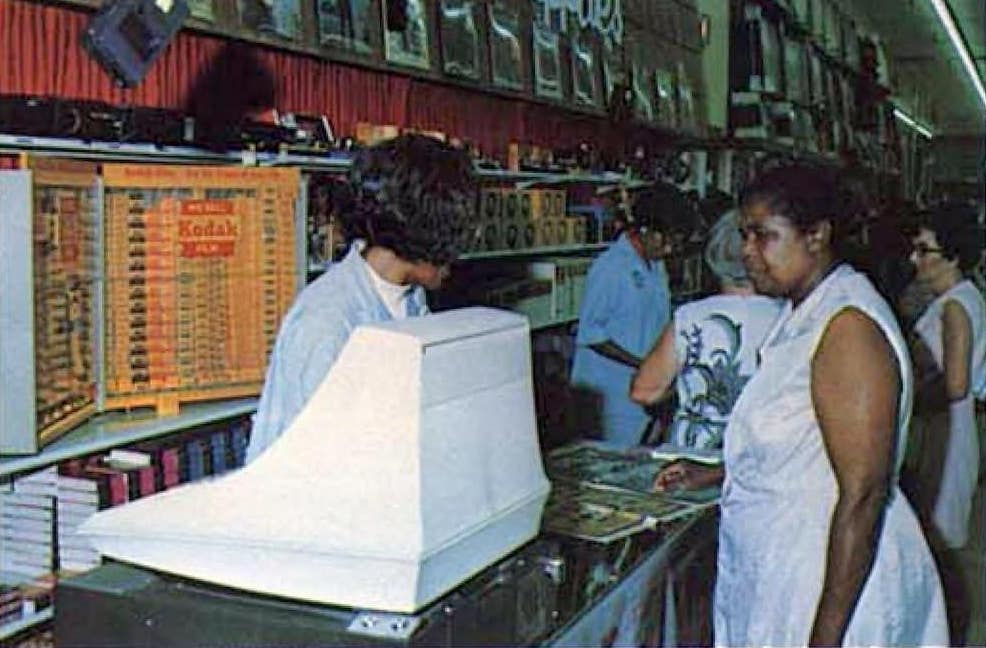
Notice the slight differences in the register above and the register at the bottom of this post. The picture above has a small “friden” logo and “data terminal” in lower case letters, the register at the bottom omits the “friden” logo and instead has “Data Terminal”. The register in the photo at the top of this post omits the “SINGER” name badge.
Here’s an example of a receipt from the Singer register at Sears. The registers were used by the chain into the early 1980s. In fact, I remember one of these registers still in the hardware department at the key duplication station in 1990 at our local Sears store.
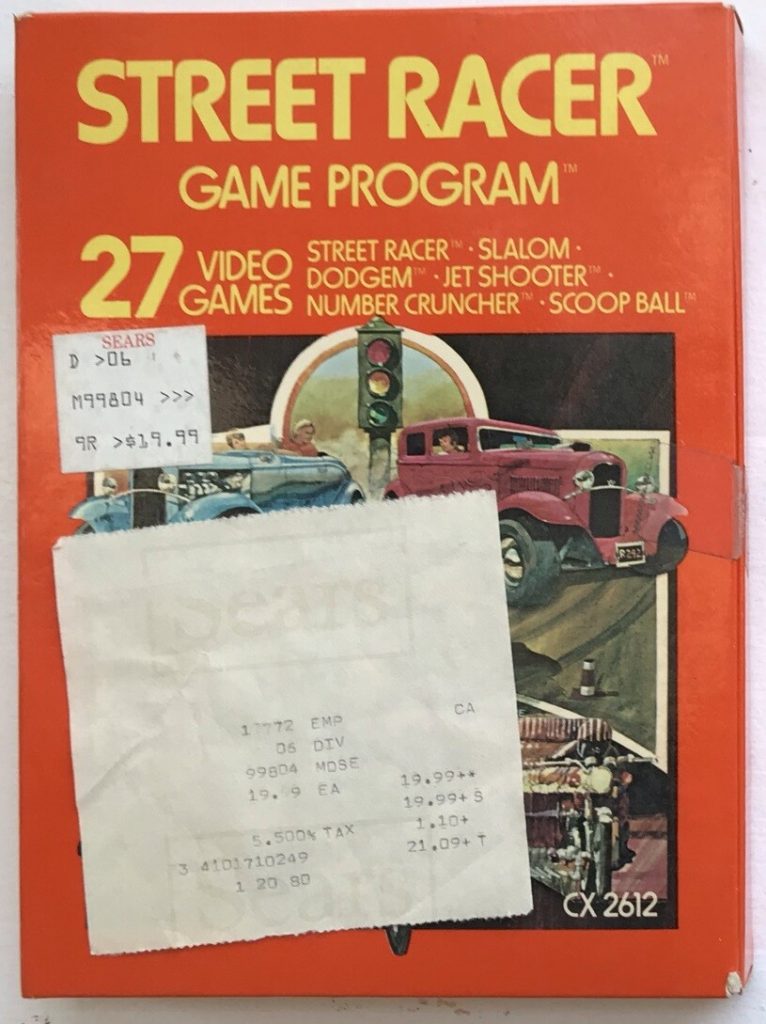
I have a marketing brochure that describes how the Modular Data Transaction System was designed to work.
MDTSHere’s some close up photos of the Singer cash register as found on worthpoint.com.
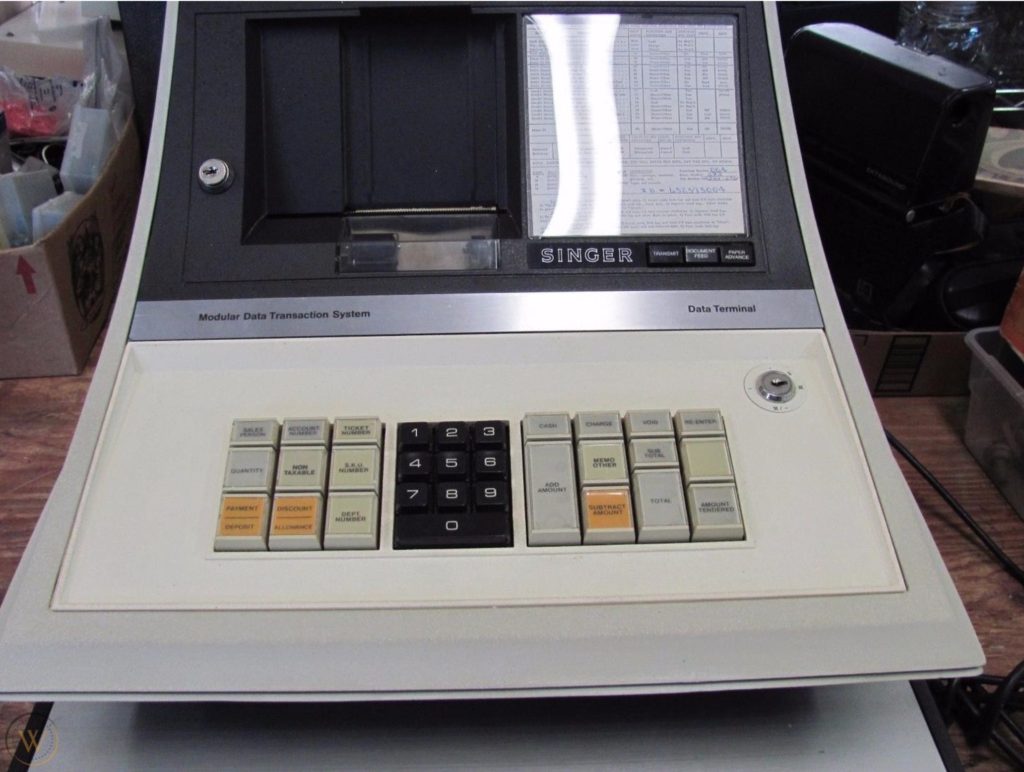
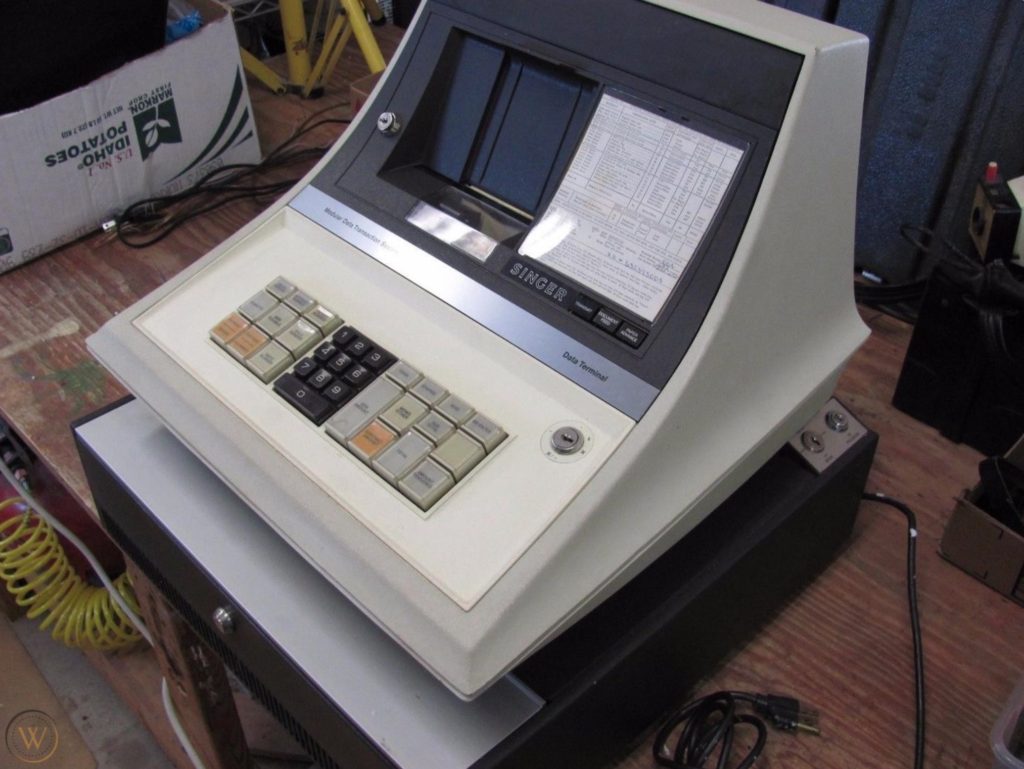
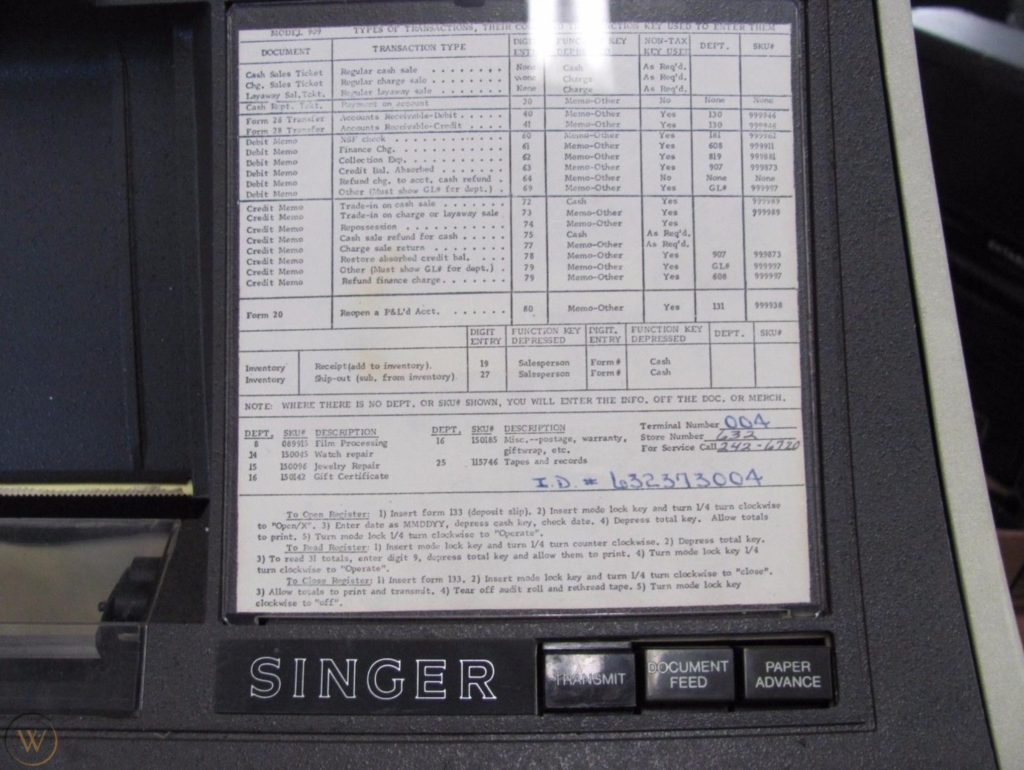

Hi,
In 1978 I worked for TRW in Fairfield, NJ. TRW had taken over the Singer cash registers. We were rebuilding the Singer terminals for Sears stores
I remember the first time I saw these cash register terminals at Sears at the Inglewood California store in the early 1970s. I was probably in middle school at the time.
Seems the data connection on the back used a right angle connector no bigger than a Canon XLR.
Here is some additional information I found…
https://innovationzen.com/blog/2006/08/09/the-electronic-cash-register-innovation/
In this video there is an image of a Singer Friden MDTS Cash Register at 14:01.
Modern ABANDONED Mall With Terrifying Sears
https://youtu.be/QuveHs1QLjc
Thanks for the heads up on this. I wish I could get my hands on one of these.
J.P. Here is a video on Youtube:
A visit to Sears with Mom in 1977
https://youtu.be/XOAv9s1u0qY?si=2KgbLO4_sBBQv1vm
At 3:39 I spot the back of a Singer-Friden Cash Register terminal! 🙂
A better shot of the Singer Friden Terminal from the keyboard entry side at 4:09.
I remember these Singer DFiden POS term8nals in use art W.T
. Grant department stor.es inthe 70s (eg WT Grant in Napanoch NY Rt209)…
I remember these Singer DFiden POS term8nals in use art W.T
. Grant department stor.es inthe 70s (eg WT Grant in Napanoch NY Rt209)…
I worked for Sears as a building engineer in Calif in the 70’s and 80’s. We had 140 of these on the salesfloor during the holidays. I must have changed out these 1000 times as they needed constant repair. TRW used to do the service. Oh what memories! The auto centers used the more modern model 925.
I worked for TRW/CSD and provided national technical support to field engineers that maintained the Singer MDTS 900/902/925 terminals.
My father, Joe Herr, did a lot of the programming on the MDTS,and received a patent for some aspect of the nixie tube display.
Up until he died a while ago, he was still kicking himself because he later realized he could have save 20 bytes in the instruction set by using math subroutines.
I worked a Singer store in the early 70’s. I operated this register everyday for 3 yrs. Loved this system. I did the bookkeeping for the store and this register cut my work in half. Every morning I would transmit, over the phone line, the previous days sales via the Friden. Coincidentally, the Sears store was 3 stores down from us. We had the Fridens before them. Sometimes the guys from Sears would come down to ask questions. Thanks for the trip down memory lane.
These were also found in Target stores in the mid to late seventies. Many stores use the huge hard drive about the size of a top loading washing machine. They uploaded the entire stores daily transactions in the middle of the night, ostensibly to save money on long distance since it actually used dial-up connection.
Hilariously, they use no kind of ups, so anytime there was a hiccup and power you’d see all the head catchers at unused checkout lanes ringing up the previous days transactions from the journal roll.
I am currently liquidating the estate of my deceased boss I found this thread while trying to determine value of items on the estate I just found a singer 902 model if anyone is interested in photos it is for sale shoot me an email at apollooftheozarks@gmail.com